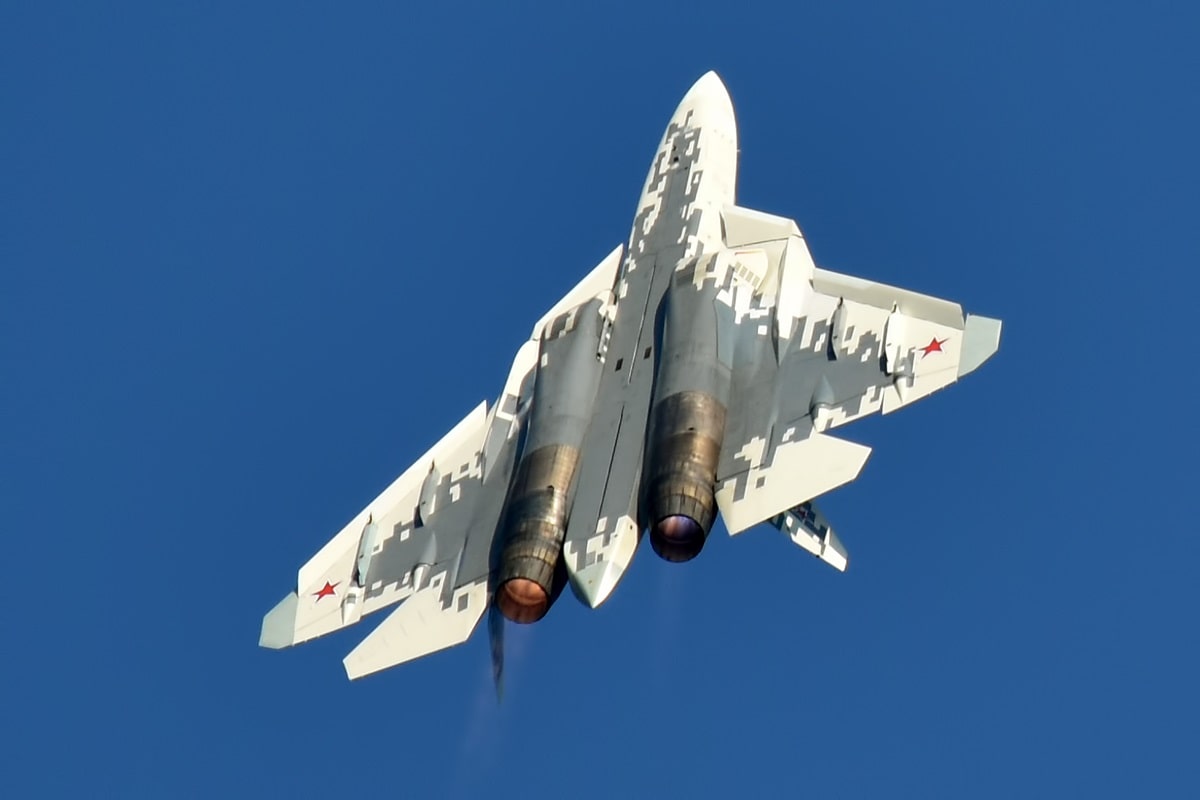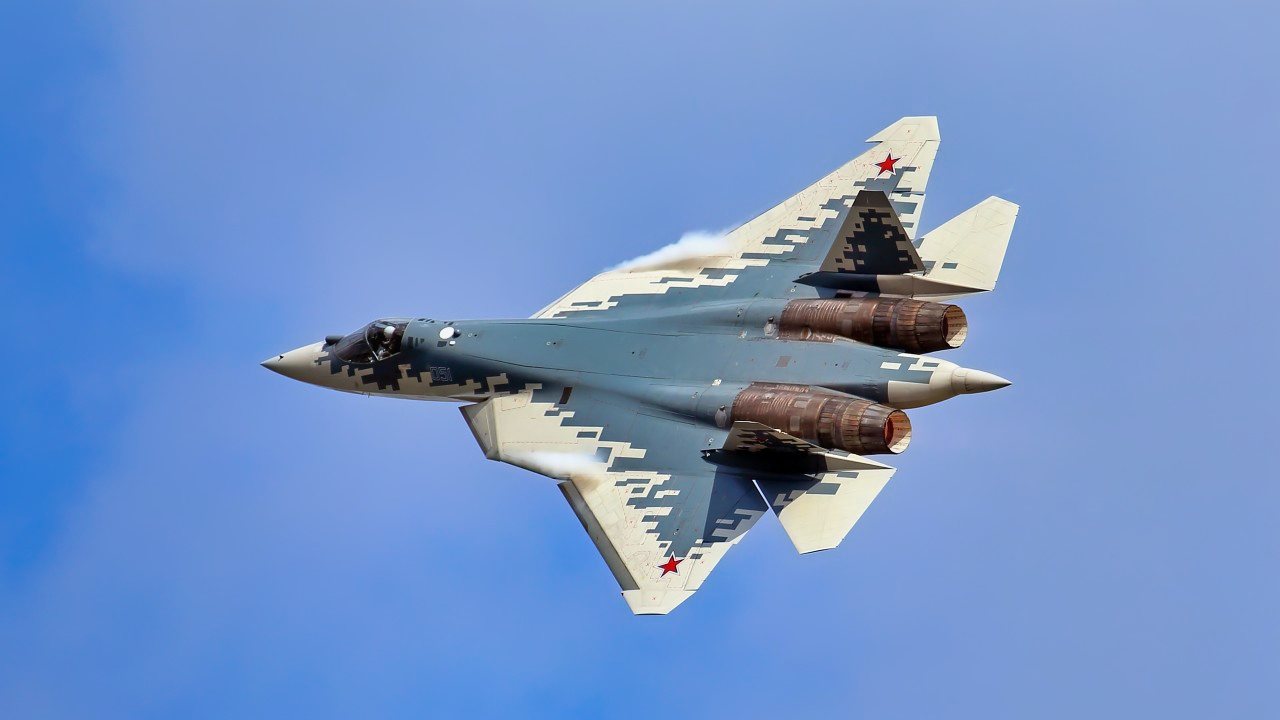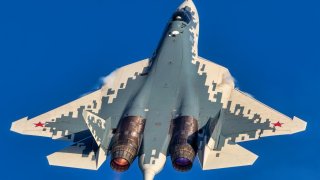Russia's Su-57 Felon: Headed for a Crash Landing Due to Sanctions?
Russia’s fifth-generation Su-57 fighter is a highly capable warplane. Still, due to its reliance on Western-made components, including advanced radar and communication systems, Moscow is cautious about deploying it over Ukraine.
What You Need to Know: Russia’s fifth-generation Su-57 fighter is a highly capable warplane, but due to its reliance on Western-made components, including advanced radar and communication systems, Moscow is cautious about deploying it over Ukraine.

-The war has complicated Russia's ability to source these critical parts due to Western sanctions, making it difficult to keep the Su-57 operational. Initially designed for export, the Su-57 was built to be compatible with Western systems.
-However, Russia has reportedly circumvented sanctions by acquiring dual-use technologies from nations like Germany, highlighting a loophole in the international response to the Ukraine conflict.
Su-57 Felon: Russia Struggles to Maintain Its Lethal Fifth-Generation Fighter Amid Sanctions
Contrary to what you may have read or heard elsewhere, Russia’s fifth-generation warplane, the Sukhoi Design Bureau-built Su-57, is a lethal warplane. Moscow is hesitant to deploy this system into many fights in the contested skies above Ukraine simply because the Su-57 is expensive to maintain and hard to replace when the entire nation is in what Russia’s leadership describes as an existential war with NATO-backed Ukraine.
To compound matters for Moscow, the Su-57 incorporates many Western-made technological components into its airframe. These components have been cut off, thanks to the Western economic, trade, and technology sanctions imposed upon Russia since they started the Ukraine War.
In turn, this has made it difficult for Russia to keep its vaunted Su-57s combat-ready. Russia is having difficulty replicating the advanced systems that they acquired from the West (back when relations with the West were far more amicable).
Russia Built the Su-57 to Be an Exportable Bird
The reason behind Russia’s decision to incorporate so many sensitive Western technologies in their Su-57 next-generation warplane was because Russia intended for the Su-57 to be a major export. It wasn’t just going to populate and reinvigorate what was then the ailing Russian Air Force. It was meant to enhance Russia’s defense industry, which has long been a primary mover of Russia’s economy.
By making the Su-57 more compatible with Western systems, Sukhoi’s designers believed they could make the plane more appealing to potential foreign buyers (because maintaining these birds would be easier due to interoperability with Western components).

Russia was hoist by its own petard, though, after it invaded Ukraine and found that it could not reliably source the components needed for the Su-57. So, given the high-risk environment that is the airspace above Ukraine, Russia decided to keep these expensive and limited number of airframes from the direct air war and instead favored using cheaper, older, easier to replace Russian-built platforms.
Yet, the Russians were not entirely defeated by their decision to make one of their newest, most advanced fighters dependent on Western technology.
Indeed, many European states in the Western alliance have been ambivalent about the ferocious Western response to the Russian invasion of Ukraine. Even in countries that have dutifully armed the Ukrainians—against the national interests of that country, such as Germany—corporations there quietly continued to do business under-the-table with Russia.
Su-57 Felon: German Firms Helping Russia Evade American Sanctions
A recent report from the private intelligence firm, Frontelligence Insight, describes how the Russians purchased a German-made Siemens KLE 360 CNC machine, with the most recent contract being signed between Russia and the German firm in July 2022—five months after the Russians invaded Ukraine. According to the report, the Russian manufacturer Mikropribor was the firm that acquired the equipment from Siemens.
The reason the Russians needed access to this technology is because a specialized radar device that gives the Su-57 significant tactical advantages in combat, the MPPU-50, along with the Siemens KLE 360 make the plane work properly. Without them, the warbird is the military equivalent of an expensive paperweight.
So, Moscow must get resourceful in order to gain access to these systems. They’ve been circumventing Western sanctions by exploiting the weaker willed members of the American-led NATO alliance.
While Germany has been a cheerleader for Ukraine’s cause, the fact remains that large sections of Germany are opposed to Berlin’s obsequiousness toward Washington. Like any other resourceful nation under Western sanctions, Russia has developed a coterie of methods for circumventing these restrictions by acquiring what’s known as dual-use technologies—systems that have apparent civilian uses but can be weaponized with some tweaking from Russian engineers and scientists.
Author Experience and Expertise: Brandon J. Weichert
Brandon J. Weichert, a National Interest national security analyst, is a former Congressional staffer and geopolitical analyst who is a contributor at The Washington Times, the Asia Times, and The-Pipeline. He is the author of Winning Space: How America Remains a Superpower, Biohacked: China’s Race to Control Life, and The Shadow War: Iran’s Quest for Supremacy. His next book, A Disaster of Our Own Making: How the West Lost Ukraine, is due October 22 from Encounter Books. Weichert can be followed via Twitter @WeTheBrandon.
All images are Creative Commons or Shutterstock.
From the Vault


